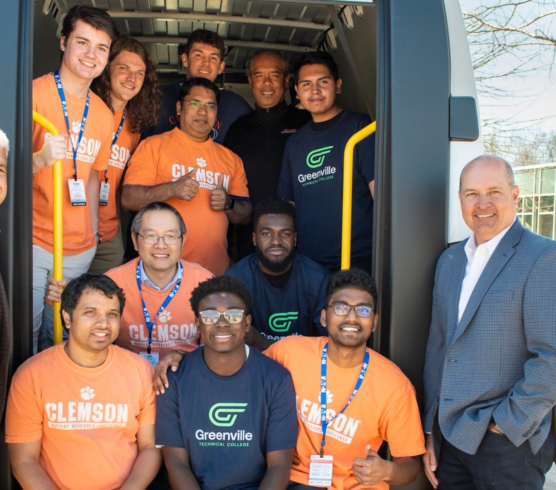The following post was written for the Green Garage Blog by the Colorado State University Vehicle Innovation Team (CSU VIT). Thanks for your contribution to the blog!
People often attend auto shows to get a glimpse into what the future of the personal transportation industry holds. The most recent 2013 auto shows wowed visitors and highlighted many new plug-in hybrid and alternative fuel technologies. Many of these technologies are presently being demonstrated by the teams competing in the EcoCAR 2 competition. Although a “chicken and egg” discussion could be had about whether universities or industry conceptualized the vehicles first, there is no debate that EcoCAR 2 teams are diving headfirst into this exciting group of technologies.
Plug-in hybrids, turbo diesels, and fuel cell vehicles, oh my! Vehicles such as the anticipated turbo diesel powered Chevrolet Colorado and plug-in Cadillac ELR include new technologies for increasing both performance and fuel economy. Both of these technologies are already exhibited by EcoCAR 2 teams in their competition vehicles. Colorado State University’s Vehicle Innovation Team (CSU VIT) is particularly excited to see the recent resurgence of hydrogen fuel cell vehicles and eager to compare them with their own.
Fuel cell technology is not entirely new. The earliest fuel cells were invented in the early 1800’s, and they’ve since been used in a variety of fields including stationary back-up power supplies and space exploration. Fuel cells cars using hydrogen are considered to be Zero Emission Vehicles (ZEV). During the mid 2000’s fleets from both GM (Chevrolet Equinox) and Honda (FCX Clarity) hit the roads in the U.S. for a limited demonstration. Limited access to refueling infrastructure and low production volumes slowed the exposure of these types of vehicles to the mass market.
Fuel cells under the hood of the CSU VIT’s H2eVWithin the last year, auto show concepts from Toyota (FCV), Honda (FCEV), Hyundai (Tucson FCEV), and others have pointed towards a new future with an increased number of fuel cell vehicles on the road. The hydrogen infrastructure for transportation applications is growing in preparation for these new vehicles.
The CSU VIT hydrogen fuel cell plug-in hybrid electric vehicle (named the H2eV) is perfectly positioned to demonstrate the benefits that fuel cell vehicle concepts can provide. While many of the fuel cell vehicle concepts shown by automotive Original Equipment Manufacturers (OEMs) rely heavily on the availability of hydrogen infrastructure, the CSU VIT has accelerated the H2eV’s marketability potential by enabling it to also function as a plug-in hybrid. This means that, if a fuel cell is unavailable, the majority of daily trips can be taken using readily-available electricity.
From auto shows and OEM announcements to universities and EcoCAR, the future of personal transportation is arriving in leaps and bounds. The CSU VIT is proud to have positioned itself at the forefront of these technologies, and believes that the H2eV is an exciting vehicle concept that can potentially lead the next wave of vehicle innovation.



